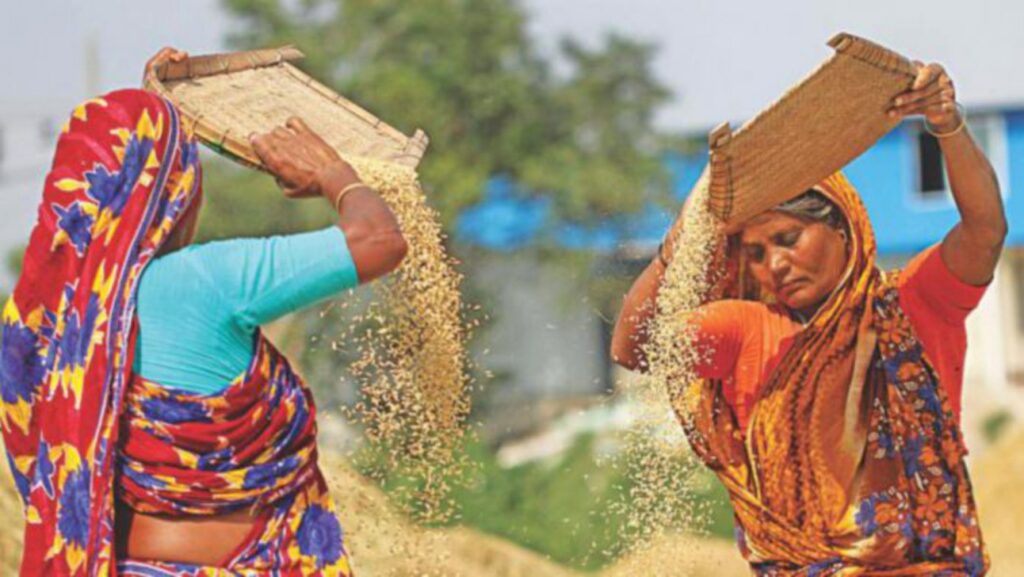According to the latest Labour Force Survey (LFS) 2016-17 of the Bangladesh Bureau of Statistics (BBS), about 44 percent of workers are self-employed—individuals working for their own household farm or non-farm enterprises. They subsist on their earnings and do not receive any (formal) wages or salary for the work performed.
Self-employment has attracted considerable attention because of the argument that earnings from self-employment are too small to escape from poverty, so the self-employed are “working hard but working poor”. This contrasts with an earlier view of self-employment as untapped entrepreneurial energy. The policy implications of the old and new views are sharply different. If self-employment is mainly repressed entrepreneurial energy, then by reducing entry regulations and improving property rights, self-employment can fuel economic growth and development; if, on the other hand, self-employment means hard, poor labour, then structural changes and intervention may be called for.
Moreover, there should be maximum focus on the self-employed, since the Seventh Five Year Plan undertook strategies to make rural people self-dependent through generating non-farm self-employment. The targeted groups are socially excluded backward groups and marginalised people, and the goal is to alleviate poverty and strengthen the rural economy. Currently, under the headings of social empowerment and social protection, about 30 employment generation programmes such as “Micro-credit for Women Self-employment”, “Rehabilitation and Creation of Alternative Employment for Beggars Profession”, and “Women’s Skill-Based Training for Livelihood” are operational, aiming to eradicate poverty, establish social justice, and provide a fair income stream. Furthermore, a World Bank Report in 2019 found a positive correlation between GDP growth and self-employment growth in Bangladesh. In other words, self-employment in the Bangladesh economy is not only higher than other economies, but it will also become more so as Bangladesh achieves higher GDP growth.
Whether or not self-employment generation programmes will work depends on the earnings of the self-employed; do they earn enough to pull themselves out of poverty?
Labour force survey data for Bangladesh shows that between 2005 and 2017, the average weekly real wage for paid employees increased by 43.7 percent and for the self-employed, it increased by 105 percent. However, this increase in real wages is not distributed evenly across different skills groups. As we move from the least skilled to the most skilled, it has a U-shape for employees but an inverted U, or hump shape, for the self-employed. Measured by the 5th, the 50th, and the 95th percentiles of wage distribution, the increases are 109 percent, 27 percent and 36 percent respectively for paid employees, and by 84 percent, 124 percent, and 19 percent for the self-employed respectively. Thus, the wage gap between the most skilled and least skilled workers of the two groups is widening, while the wage gap between moderately skilled workers is narrowing.
The scant earnings from self-employment, combined with sluggish and disproportional real wage growth, poses a fundamental threat to the future reduction of poverty and vulnerability. Overall, we find a mixed pattern of real wage growth, both for the paid employees and the self-employed, that disfavour the least skilled self-employed.
In 2005, the average weekly wage earned by paid employees was BDT 1241, whereas the self-employed earned only BDT 431 per week. In 2017, the average weekly real wage rose to BDT 1778 and BDT 884 for the paid employees and the self-employed respectively. Paid employees earned about 101 percent more real wages in 2017 and about 187 percent more real wages in 2005 then the self-employed. However, the averages cannot describe the tail of the wage distribution.
Focusing on the percentile distribution of the weekly wages, we found that for a good range, the self-employed wage is below the minimum wage of paid employees—about 33 percent of the self-employed earn less than BDT 647. This level of earning is lower than the wage of the paid employees at the first percentile. Similarly, about 11 percent of paid employees earn a higher wage than the ninety-fifth percentile self-employed. Moreover, the wage differentials between the least skilled paid employees and self-employed are rising, while average wage differentials are falling. This data demonstrates that the poor self-employed are getting poorer.
Given the shrinking of manufacturing employment, the stagnation of private sector employment and the vastness of the unemployed population, the demand for self-employment is currently very high. The Government of Bangladesh is also using self-employment as an instrument to generate employment opportunities for women and excluded individuals. By contrast, most women’s and excluded individuals’ human capital is below the moderately skilled threshold level, which means that although they will work, they will be “working hard but working poor”. Unfortunately, this means that the strong assumption that providing self-employment opportunities will pull the poor out of poverty is not supported by the data. Generating self-employment without a sufficient minimum income will have an insignificant impact on reducing poverty and inequality. A guaranteed income scheme and the improvement of human capital are necessary for the least skilled workers to be equipped with a fighting chance to battle the curse of poverty.
Md Al-Hasan is Senior Research Associate, Centre for Policy Dialogue (CPD). He can be reached at al.hasan@cpd.org.bd.
buy Prednisone No Prescription
Pepcid no prescription
buy Amitriptyline No Prescription
Buy Levaquin online

